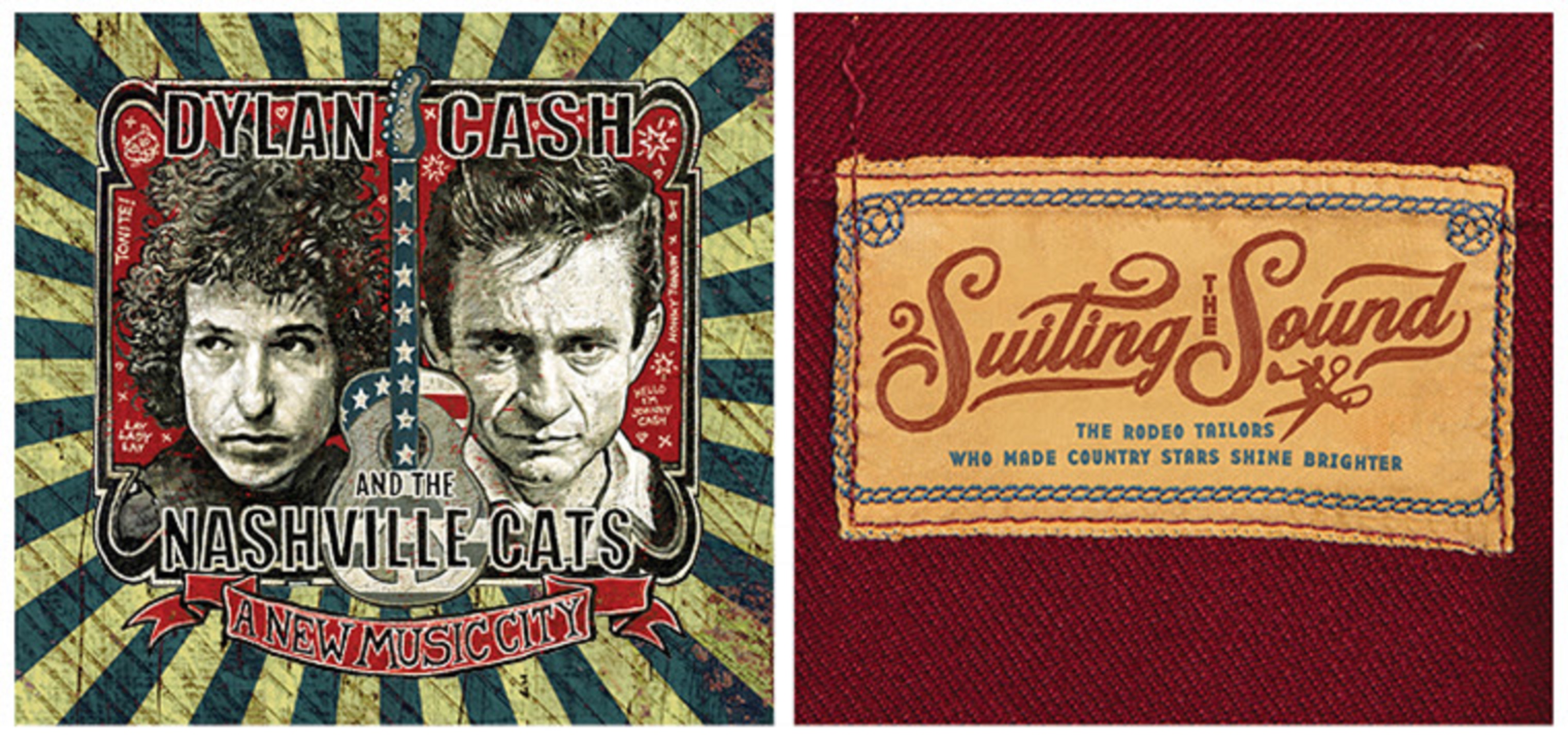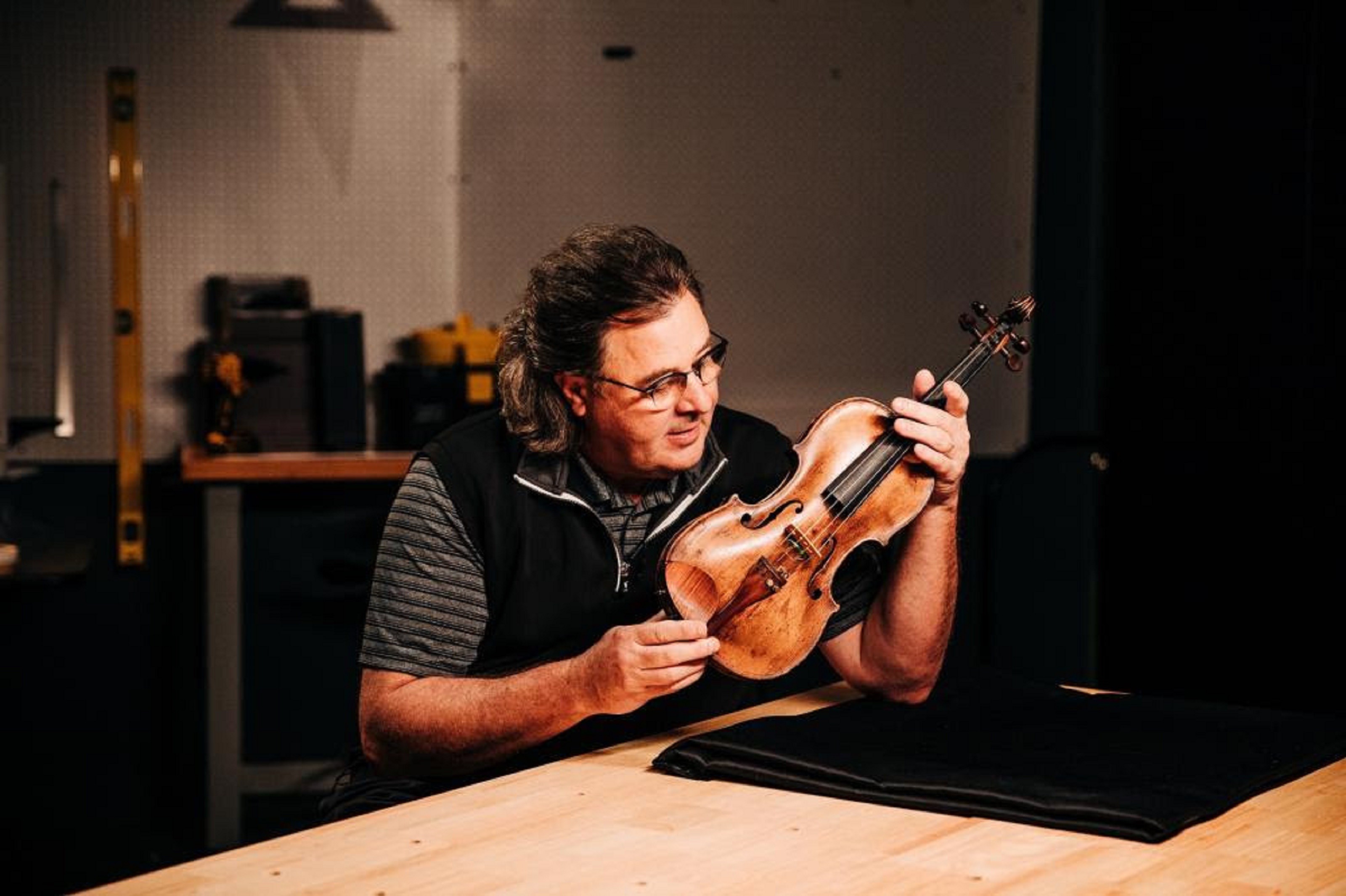Today, the Country Music Hall of Fame® and Museum unveiled new, free-to-access online exhibitions: Suiting the Sound: The Rodeo Tailors Who Made Country Stars Shine Brighter and Dylan, Cash and the Nashville Cats: A New Music City. These multimedia exhibits are the first designed exclusively for the museum’s website.
“As a national history museum and global cultural institution, we are charged to consistently expand access to the museum’s collection and the interpretive work of our curators and historians, while advancing the documentation and preservation of American musical history,” said museum CEO Kyle Young. “These online exhibitions, made possible by a grant from the National Endowment for the Humanities, enabled the museum to create this novel exhibit platform. With it, we are not only able to reshare the story of the artists and musicians who helped to broaden Nashville’s reputation as a true Music City, but also to tell a new story, that of the clothiers who created unmistakable designs that are now synonymous with country music.”
Suiting the Sound: The Rodeo Tailors Who Made Country Stars Shine Brighter
Curated specifically for an online audience, Suiting the Sound: The Rodeo Tailors Who Made Country Stars Shine Brighter draws from the museum’s exhibit galleries and permanent collection to explore the artistry of Western-wear designers, often known as “rodeo tailors,” whose couture designs helped to create the indelible “rhinestone cowboy” image for country music.
The exhibition examines the emergence of this unique look in the 1940s and 1950s, largely from the tailor shops of Eastern European Jewish immigrants – who carved a successful niche for themselves by embracing America’s fascination with cowboy culture and Western imagery. Viewers will learn how the creative vision of the early designers – including "Rodeo Ben” Lichtenstein, Nathan Turk and Nudie Cohn, who were all Eastern European Jewish immigrants – endures today, especially through Cohn’s former apprentices Manuel Cuevas and Jaime Castaneda, each of whom moved from Mexico to Los Angeles.
The exhibit also looks at today’s contemporary clothiers – including Union Western’s Jerry Atwood, Fort Lonesome’s Kathie Sever, and “Katy K” Kattelman – who continue to draw both inspiration from Cohn, Turk, Lichtenstein and Cuevas’s expressions of cowboy style. Today’s designers’ modern spins on classic Nudie suits and vintage stage costumes have been spotted on a wide range of recording artists including Charley Crockett, Jenny Lewis, Post Malone, Midland, Margo Price and Lil Nas X.
The exhibit includes detailed color photographs of stage wear, tools of the trade and historical photographs and video. Artifacts include:
A two-tone, wool gabardine outfit, embellished with chain-stitch embroidered flowers, contoured yoke, scalloped shotgun cuffs, whipcord piping and “V” smile pockets with arrowhead stitching, designed by Rodeo Ben for singer and guitarist Schuyler “Sky” Snow of the duo Jerry & Sky
A three-piece cowgirl costume designed by Nathan Turk for Rose Maddox, lead singer in her family band, the Maddox Brothers & Rose
Country Music Hall of Fame member Hank Thompson’s boots, featuring a fantastical scene commemorating his career-launching 1948 hit “Humpty Dumpty Heart,” created by Nudie Cohn’s master embroiderer Viola Grae
A Manuel jacket, with fleur-de-lys embroidery and rhinestones, designed for Roseanne Cash
A Cohn-inspired cowgirl costume worn by Country Music Hall of Fame member Patsy Cline, designed and sewed by her mother, Hilda Hensley
A face covering decorated with rhinestones and appliqué, created by Union Western’s Atwood in response to the COVID-19 pandemic
Dylan, Cash, and the Nashville Cats: A New Music City
Originally presented in the museum’s galleries from 2015 to 2018, Dylan, Cash, and the Nashville Cats: A New Music City has been adapted for an online audience. The exhibit explores Bob Dylan’s Nashville recordings in the 1960s and his impact on the local music industry; the role of Country Music Hall of Fame member Johnny Cash’s groundbreaking television show in expanding the perception of Nashville as a music center welcoming to all; and the importance of the community of ace session musicians, known as the “Nashville Cats.” The Nashville Cats, whose members included Kenny Buttrey, Lloyd Green, Country Music Hall of Fame members Charlie Daniels, Charlie McCoy, Jerry Reed and Hargus “Pig” Robbins and others, are featured on many significant recordings of the late 1960s and 1970s, including Neil Young’s Harvest, Leonard Cohen’s Songs from a Room, the Byrds’ Sweetheart of the Rodeo, Linda Ronstadt’s Silk Purse and multiple Dylan albums.
As a result of Nashville’s changing image, more and more artists chose to record there. In addition, there was a new blending of musical genres that further influenced musicians in Nashville and beyond. This is evident today as Nashville’s music community includes internationally recognized rockers, pop hitmakers and singer-songwriters of every genre, many drawing inspiration from the groundbreaking work of Dylan, Cash and the Nashville Cats, who expanded the image and meaning of Music City USA.
Dylan, Cash, and the Nashville Cats: A New Music City features vintage clips from The Johnny Cash Show, rare archival footage and images of artifacts including:
The handwritten manuscript for “Wanted Man,” a song Dylan wrote for Cash in Nashville, which Cash recorded for his 1969 album Johnny Cash at San Quentin
A mahogany 1949 Martin 00-17 that Dylan used in the early 1960s
Lloyd Green’s Sho-Bud pedal steel guitar, used on the Byrds’ Sweetheart of the Rodeo and other classic recordings
Norbert Putnam’s Fender Precision bass, used on recordings by Linda Ronstadt (“Long Long Time”), Tony Joe White (“Polk Salad Annie”), Joan Baez and Country Music Hall of Fame members Kris Kristofferson and Elvis Presley
Cash’s Eaves Costume Company suit, which he wore on his network TV series The Johnny Cash Show
In support of these online exhibitions, the museum will offer a variety of educational programming, including a collaboration with Nashville Fashion Week. Details will be added to our website once available.
Both online exhibitions are made possible by a National Endowment for the Humanities (NEH) CARES grant award. With NEH funding, the museum built a platform to support these and future online exhibits. In addition, the grant award underwrote the photography of more than 300 collections objects for addition to the museum’s digital archive.
To view these exhibits and for additional information, visit www.CountryMusicHallofFame.org









